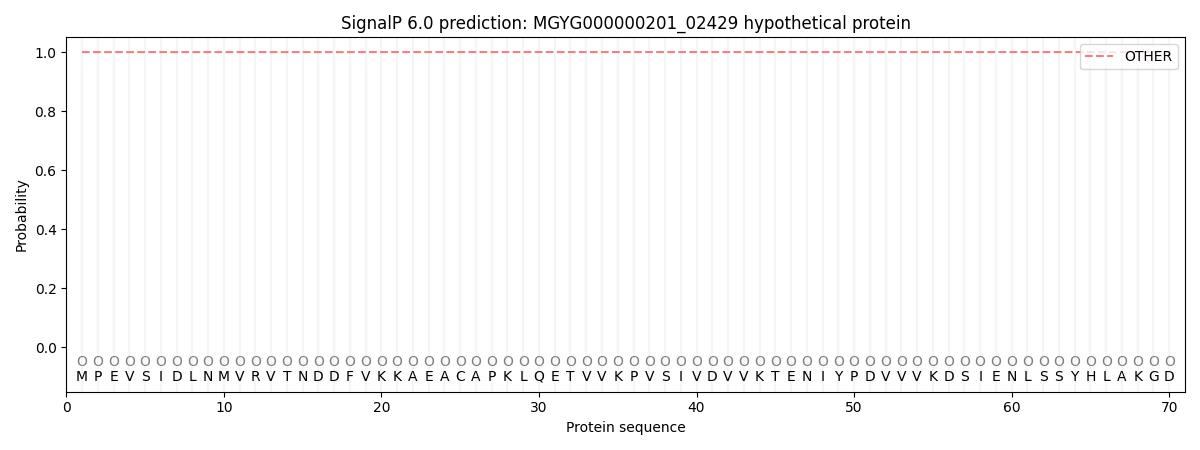You are browsing environment: HUMAN GUT
CAZyme Information: MGYG000000201_02429
You are here: Home > Sequence: MGYG000000201_02429
Basic Information |
Genomic context |
Full Sequence |
Enzyme annotations |
CAZy signature domains |
CDD domains |
CAZyme hits |
PDB hits |
Swiss-Prot hits |
SignalP and Lipop annotations |
TMHMM annotations
Basic Information help
| Species | Blautia_A sp900066145 | |||||||||||
|---|---|---|---|---|---|---|---|---|---|---|---|---|
| Lineage | Bacteria; Firmicutes_A; Clostridia; Lachnospirales; Lachnospiraceae; Blautia_A; Blautia_A sp900066145 | |||||||||||
| CAZyme ID | MGYG000000201_02429 | |||||||||||
| CAZy Family | GH78 | |||||||||||
| CAZyme Description | hypothetical protein | |||||||||||
| CAZyme Property |
|
|||||||||||
| Genome Property |
|
|||||||||||
| Gene Location | Start: 55842; End: 57410 Strand: + | |||||||||||
CAZyme Signature Domains help
| Family | Start | End | Evalue | family coverage |
|---|---|---|---|---|
| GH78 | 68 | 521 | 1.3e-83 | 0.8611111111111112 |
CDD Domains download full data without filtering help
| Cdd ID | Domain | E-Value | qStart | qEnd | sStart | sEnd | Domain Description |
|---|---|---|---|---|---|---|---|
| pfam17389 | Bac_rhamnosid6H | 4.83e-22 | 182 | 520 | 1 | 339 | Bacterial alpha-L-rhamnosidase 6 hairpin glycosidase domain. This family consists of bacterial rhamnosidase A and B enzymes. L-Rhamnose is abundant in biomass as a common constituent of glycolipids and glycosides, such as plant pigments, pectic polysaccharides, gums or biosurfactants. Some rhamnosides are important bioactive compounds. For example, terpenyl glycosides, the glycosidic precursor of aromatic terpenoids, act as important flavouring substances in grapes. Other rhamnosides act as cytotoxic rhamnosylated terpenoids, as signal substances in plants or play a role in the antigenicity of pathogenic bacteria. |
| COG3459 | COG3459 | 6.45e-08 | 289 | 505 | 677 | 942 | Cellobiose phosphorylase [Carbohydrate transport and metabolism]. |
| pfam17167 | Glyco_hydro_36 | 0.001 | 276 | 446 | 122 | 307 | Glycosyl hydrolase 36 superfamily, catalytic domain. This is the catalytic region of the superfamily of enzymes referred to as GH36. UniProtKB:Q76IQ9 is a chitobiose phosphorylase that catalyzes the reversible phosphorolysis of chitobiose into alpha-GlcNAc-1-phosphate and GlcNAc with inversion of the anomeric configuration. The full-length enzyme comprises a beta sandwich domain and an (alpha/alpha)(6) barrel domain. The alpha-helical barrel component of the domain, this family, is the catalytic region. |
| cd01967 | Nitrogenase_MoFe_alpha_like | 0.004 | 355 | 405 | 244 | 298 | Nitrogenase_MoFe_alpha_like: Nitrogenase MoFe protein, alpha subunit_like. The nitrogenase enzyme catalyzes the ATP-dependent reduction of dinitrogen to ammonia. Three genetically distinct types of nitrogenase systems are known to exist: a molybdenum-dependent nitrogenase (Mo-nitrogenase), a vanadium dependent nitrogenase (V-nitrogenase), and an iron-only nitrogenase (Fe-nitrogenase). These nitrogenase systems consist of component 1 (MoFe protein, VFe protein or, FeFe protein respectively) and, component 2 (Fe protein). This group contains the alpha subunit of component 1 of all three different forms. The most widespread and best characterized of these systems is the Mo-nitrogenase. MoFe is an alpha2beta2 tetramer, the alternative nitrogenases are alpha2beta2delta2 hexamers having alpha and beta subunits similar to the alpha and beta subunits of MoFe. The role of the delta subunit is unknown. For MoFe, each alphabeta pair of subunits contains one P-cluster (located at the alphabeta interface) and, one molecule of iron molybdenum cofactor (FeMoco) contained within the alpha subunit. The Fe protein is a homodimer which contains, a single [4Fe-4S] cluster from which electrons are transferred to the P-cluster of the MoFe and in turn, to FeMoCo the site of substrate reduction. The V-nitrogenase requires an iron-vanadium cofactor (FeVco), the iron only-nitrogenase an iron only cofactor (FeFeco). These cofactors are analogous to the FeMoco. The V-nitrogenase has P clusters identical to those of MoFe. In addition to N2, nitrogenase also catalyzes the reduction of a variety of other substrates such as acetylene The V-nitrogenase differs from the Mo- nitrogenase in that it produces free hydrazine, as a minor product during dinitrogen reduction and, ethane as a minor product during acetylene reduction. |
CAZyme Hits help
| Hit ID | E-Value | Query Start | Query End | Hit Start | Hit End |
|---|---|---|---|---|---|
| CBL22278.1 | 0.0 | 1 | 521 | 1 | 521 |
| QCU02819.1 | 0.0 | 1 | 521 | 1 | 521 |
| AGF55542.1 | 2.78e-188 | 15 | 521 | 15 | 520 |
| AWH77632.1 | 2.88e-188 | 15 | 521 | 16 | 521 |
| AXU46522.1 | 2.88e-188 | 15 | 521 | 16 | 521 |
PDB Hits download full data without filtering help
| Hit ID | E-Value | Query Start | Query End | Hit Start | Hit End | Description |
|---|---|---|---|---|---|---|
| 4XHC_A | 1.39e-148 | 17 | 520 | 38 | 541 | ChainA, Alpha-L-rhamnosidase [Klebsiella oxytoca],4XHC_B Chain B, Alpha-L-rhamnosidase [Klebsiella oxytoca] |
| 3CIH_A | 1.25e-27 | 75 | 521 | 197 | 636 | Crystalstructure of a putative alpha-rhamnosidase from Bacteroides thetaiotaomicron [Bacteroides thetaiotaomicron VPI-5482] |
Swiss-Prot Hits help
SignalP and Lipop Annotations help
This protein is predicted as OTHER

| Other | SP_Sec_SPI | LIPO_Sec_SPII | TAT_Tat_SPI | TATLIP_Sec_SPII | PILIN_Sec_SPIII |
|---|---|---|---|---|---|
| 1.000062 | 0.000000 | 0.000000 | 0.000000 | 0.000000 | 0.000000 |
